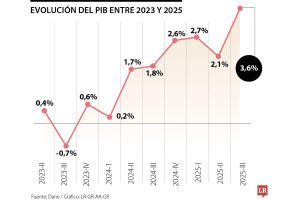U.S. Federal Reserve officials including Fed Chair Jerome Powell said on Thursday they are still not sure that interest rates are high enough to finish the battle with inflation, with Powell cautioning that the Fed may get little further help in taming price increases from improvements in the supply of goods, services and labor.
The Fed “is committed to achieving a stance of monetary policy that is sufficiently restrictive to bring inflation down to 2% over time; We are not confident that we have achieved such a stance,” Powell said at an International Monetary Fund event briefly disrupted by climate protesters. “If it becomes appropriate to tighten policy further, we will not hesitate to do so.”
His comments, taken as hawkish by markets that bid up market interest rates, were echoed by three colleagues who continued to keep the emphasis on taming inflation as the Fed’s main concern.
“It would be unwise to suggest that further rate hikes are off the table,” interim St. Louis Fed President Kathleen O’Neill Paese said at an event in Indiana. “There is considerable economic uncertainty at the present time. There are reasons inflation could surprise to the upside.”
Speaking at a separate event, Richmond Fed President Thomas Barkin noted that it “remains to be seen” if further tightening will be warranted, particularly with the economy growing at a 4.9% clip last quarter.
That’s a pace inconsistent with further slowing of inflation, he said, even as he endorsed the central bank’s current wait-and-see approach on a further policy rate increase.
The Fed at its Oct. 31-Nov. 1 meeting held interest rates steady at the current 5.25% to 5.5% range, nodding to both risks that inflation remained too high amid strong economic growth, but also to the fact that recent increases in market-based interest rates could slow the economy and make further Fed policy rate increases unnecessary.
Powell said that the Fed will proceed “carefully” from here as officials “address both the risk of being misled by a few good months of data, and the risk of overtightening. We are making decisions meeting by meeting.”
Still, Powell said the fight to restore price stability, with inflation at 3.4% and changing only slowly in recent months, “has a long way to go.”
BATTLE’S FINAL PHASE
While Powell’s remarks about the immediate policy outlook did not go much beyond those given after the most recent Fed meeting they did elicit a response from financial markets.
Traders now see about a one-in-four chance of a further rate hike by January, up from about one-in-six earlier, and expect Fed rate cuts to wait until June. Longer-term bond yields also rose, helped also by a weaker-than-expected 30-year bond auction.
Indeed, Powell used much of his speech to delve into his views about how the final phase of the inflation battle may unfold, suggesting that “disinflation” from here on may have to rely more on an economic slowdown than improvements in supply.
“It is not clear how much more will be achieved by additional supply-side improvements,” Powell said. Going forward, “it may be that a greater share of the progress in reducing inflation will have to come from tight monetary policy restraining the growth of aggregate demand.”
“The forward-looking implication is that the so-far immaculate disinflation may get a little more painful in the future,” said JP Morgan Economist Michael Feroli. “We still believe the Fed is done hiking for this cycle, but today’s speech should serve as notice that their rhetoric must stay hawkish until they’ve seen further improvement in inflation.”
Data in coming weeks, including the release next week of October’s consumer price index, will be particularly key as Fed officials weigh any further tightening ahead of their next meeting on Dec. 12-13.
Giving voice to the other side of the debate at the Fed, Chicago Fed President Austan Goolsbee told the Wall Street Journal officials need to be careful of overshooting, given the impact of higher bond yields.
Powell nodded to that risk in his IMF appearance, saying that Fed is “not going to ignore” a significant tightening in financial conditions and does not want to overtighten policy.
Still, he said, “the biggest mistake we could make is really, to fail to get inflation under control.”







